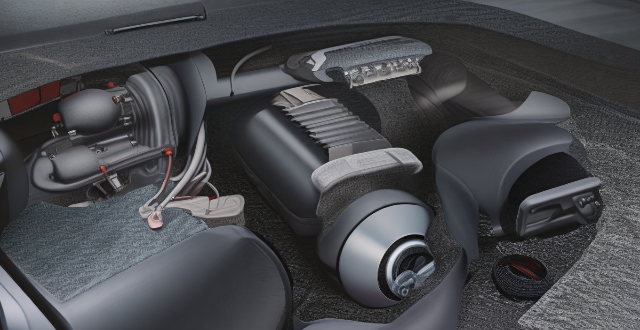The air conditioning system in a car works by circulating refrigerant through a closed loop, which cools down the interior of the car and removes moisture from the air. The main components of the system include the compressor, condenser, expansion valve, evaporator, and blower fan. By adjusting the settings on the climate control system, you can control the temperature inside the car and choose between recirculating air or letting fresh air in.

How does the air conditioning system in a car work?
The air conditioning system in a car is designed to regulate the temperature and humidity levels inside the vehicle, providing comfort for the passengers. It consists of several components that work together to cool down the interior of the car. Here's how it works:
1. Refrigerant Circulation: The refrigerant, typically a chemical called R-134a, circulates through the air conditioning system in a closed loop. It starts as a low-pressure gas and is compressed by the compressor, which increases its pressure and temperature.
2. Condenser: The hot, high-pressure refrigerant then flows through the condenser, which is located at the front of the car. As air passes over the condenser fins, it cools down the refrigerant, causing it to condense into a liquid.
3. Expansion Valve: The liquid refrigerant then passes through an expansion valve or orifice tube, which reduces its pressure and temperature. This causes it to expand and turn back into a gas, but now at a much lower temperature than before.
4. Evaporator: The cold, low-pressure refrigerant gas then enters the evaporator, which is located inside the car near the dashboard. As air from inside the car blows over the evaporator fins, the refrigerant absorbs heat from the air, cooling it down. The refrigerant also changes back into a gas in this process.
5. Blower Fan: A blower fan draws air from inside the car and pushes it through the evaporator, where it gets cooled down before being directed back into the cabin.
6. Compressor: The refrigerant gas then returns to the compressor, where it gets compressed again and the cycle repeats.
In addition to cooling the air, the air conditioning system also removes moisture from the air through a process called dehumidification. As moist air passes over the cold evaporator coils, water condenses on them and drips out of the car through drain tubes.
To control the temperature inside the car, you can adjust the settings on your car's climate control system. This allows you to set a desired temperature and choose between recirculating air inside the car or letting fresh air in from outside.
Overall, the air conditioning system in a car relies on the circulation of refrigerant and the exchange of heat between the refrigerant and the air inside the car to provide a comfortable driving experience.